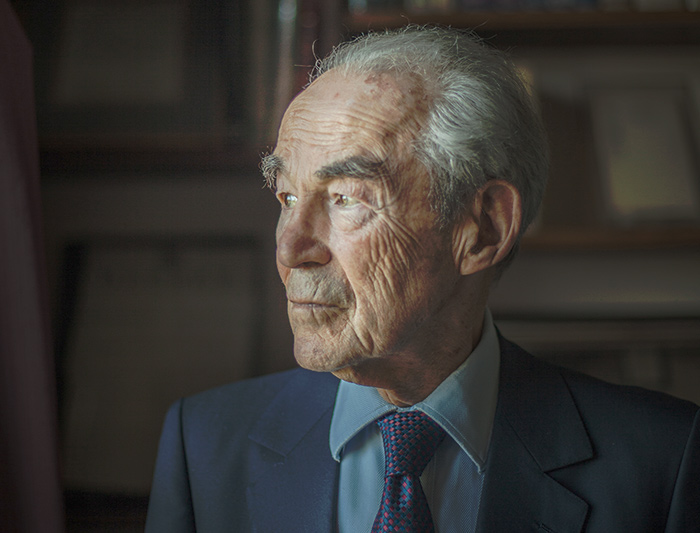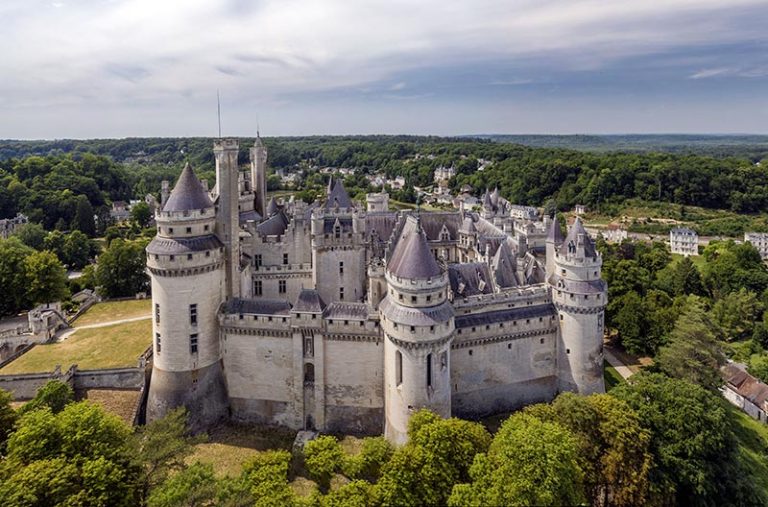Registered with the Paris bar in 1951, Robert Badinter saved Patrick Henry from the death penalty in 1977, a sentence which he had abolished, becoming Minister of Justice under the presidency of François Mitterrand from 1981 to 1986. He chaired the Constitutional Council from 1986 in 1995 before leading a career as a senator until 2011. In 2010, he co-curated an exhibition at the Musée d’Orsay. He is the husband of Élisabeth Badinter, daughter of advertising executive Marcel Bleustein-Blanchet. At 90 years old, Robert Badinter remains very active. He wanted to reread and modify many of his comments made during this interview organized by Hélène Bonafous-Murat, an expert in prints.
Do you remember your first aesthetic emotions as a young man? Were you surrounded by art in your family?
No, I didn’t grow up in an art-oriented family at all. My father was on the side of books rather than paintings. I went to museums, yes, and I was sensitive to the masterpieces presented. But I mainly went to concerts or the opera and it moved me much more. The only painting, without much artistic value, that I have kept from this period is behind me, in my office.
Is it the one that represents four characters?
Yes, two of them are rabbis. It was my father who bought it at the Hôtel Drouot. You know that in principle, in the Jewish religion as among Muslims, we do not reproduce the sacred. This 19th century painting, which probably comes from the Krakow side of the Austro-Hungarian Empire, has for me a more sentimental than pictorial value. Judaism is an abstract religion. But that did not prevent it from being the source of countless works of art, inspired by episodes from the Old Testament. If I had to name a genius painter who was interested in Jews and the Jewish religion, it would obviously be Rembrandt.
As an adult, did you become more interested in art?
Yes, more and more throughout my life. I frequented museums, especially abroad when I went there. I have done pictorial tourism and also, this is a particularity, legal tourism. I always went to the courthouses to see how they judge, even when I didn’t understand the language. There is a relationship that develops between the judge and the person being judged, which is very different depending on the culture. But I do not claim to be an expert in the artistic field. I’m just a sometimes passionate amateur.
Have you visited “justice museums” in your travels abroad?
No, I didn’t find one and I dreamed a lot of a “museum of justice” in France. Not only a museum of the art of justice which would be devoted to the representation, by artists, of justice and its protagonists, but also a museum of the history of justice. With André Vallini (senator of Isère), we wanted to do it in Grenoble because there is a beautiful courthouse which is no longer in use since a modern palace was built. It didn’t happen and I regretted it. In this regard, I am dismayed to see the Paris court go to the side of the ring road. Not that the building is architecturally indifferent, but it is a judicial building. When we have judged for 2,000 years on the Isle of the City, we must not leave it. How many times, in the first room of the tribunal, have I dreamed of the trial of Marie-Antoinette which had taken place there!
I am hostile to such a museum. Other museums should have been stripped of their collections, such as that of Versailles. And how to choose the works? History is not just the history of events. And then, what is the history of France? That of Lucien Febvre, that of the Annales, that of Michelet?
Did you discuss art with François Mitterrand when you were Minister of Justice?
I traveled a lot with Mitterrand, but on private trips. We were going to visit the writers’ houses to see the office, the library. The most astonishing thing in this genre is Victor Hugo’s house, Hauteville House, in Guernsey, with its desk facing the sea where Hugo wrote standing. For these friendly excursions, security was kept to a minimum. They were happy times. We had a lot of fun, we discussed literature.
Of all the paintings you have acquired, which one will you never part with?
This painting by Gérard Fromanger which represents Michel Foucault (Robert Badinter points to a large painting on one of the walls of the office, Editor’s note). I had seen it in a reduced form in the office of Edmond Maire, then leader of the CFDT. And I found it wonderful. This portrait really highlights his “devilish” side.
Is that a painting by Jacques Monory hanging there?
Yes. But it is not at all, as we believe, a judicial picture. It represents conscription in the United States in 1917, when conscripts were drawn to determine those who would go to war. I am a collector of documents on the theme of justice: decisions of the Parliament of Paris, court documents. In the past, they were easy to find, there was always an old bookstore that sold such archives. Today the computer unfortunately leads to the disappearance of part of the archives, we will not keep the preparatory versions of a bill or judgment…
But these documents do not bring the same emotion as the artist’s vision of justice. Odilon Redon thus painted the inmate in his cell. Unlike the usual vision from the outside in, where we look at the prisoner, with Redon it is the prisoner who looks at us. And this inversion makes a big difference.
The search for justice drives you deeply. Has art helped you with this question?
Much has been written, including plays and operas, but a better explanation of this mystery has never been found. In the great myth of the Old Testament, the first man on this Earth to be born from the works of man and woman is Cain. This first man is an assassin. And who does he kill? His brother ! This myth raises a major question about human nature: why crime? And its corollary: what punishment?
Yes, and I cannot thank enough Guy Cogeval (then president of the Museum) who accepted the project and Jean Clair who was the curator of the exhibition. I had read many legal texts and works on justice, but the question remained: has the artist, precisely because he tries to go further than the ordinary gaze, succeeded in open up ways for us to understand crime and its corollary, punishment?
What I noticed is that punishment does not interest the artist. Only suffering, that of the victim or the condemned, fascinates him. Furthermore, justice only began to interest artists from the moment it became a spectacle, that is to say when the courthouses were open to the public for criminal cases. Let us not forget that before the French Revolution, serious criminals were judged behind closed doors. The time when the public saw the criminal was when he was being led to execution or torture. “La Brinvilliers”, for example, appears to the public when she is being tortured, not at the time of her trial. The artist’s eye has captured the criminal, but not to depict justice. What interests the artist is the face of the criminal and the representation of the crime. These are the extreme cases where man violates major prohibitions. It’s sacrilege. Goya and Picasso – Picasso even more so – have the same fascination with rape, represented with different geniuses. For me, pictorial art is superior to literature in expressing crime. In Therese Raquin, of Zola, the lover kills the husband in front of his mistress, but the same scene is represented by Cézanne in a more striking way (in Murder, with the only difference that in the novel, it is a man who is the victim. Cézanne will take up this theme of assassination in The Strangled Woman).
You have traveled a lot, how has France’s cultural influence evolved in the world?
I see like everyone else that in the artistic field, the “market” favors American artists. I’m talking about the market, because it has taken over art. Paris is no longer the capital of art that it was until the 1960s. And the French language is losing ground everywhere. I am very critical, because we had – we still have – the privilege of an admirable language, read The Princess of Cleves, and we have done everything to bastardize or deteriorate it by using concepts, words that correspond to foreign cultures and sensitivities. There was a sort of betrayal of the French language to which I am very sensitive. At all times, we resort to Anglo-Saxon terms, even when there is no need, when there is a word in French. This is also true in the legal field.
But to come back to art, and end with a pirouette, I remember that an English doctor with whom I studied for language stays always said: “Life is nothing without music” (“life is nothing without music”). I would say: “Life is nothing without art”.







